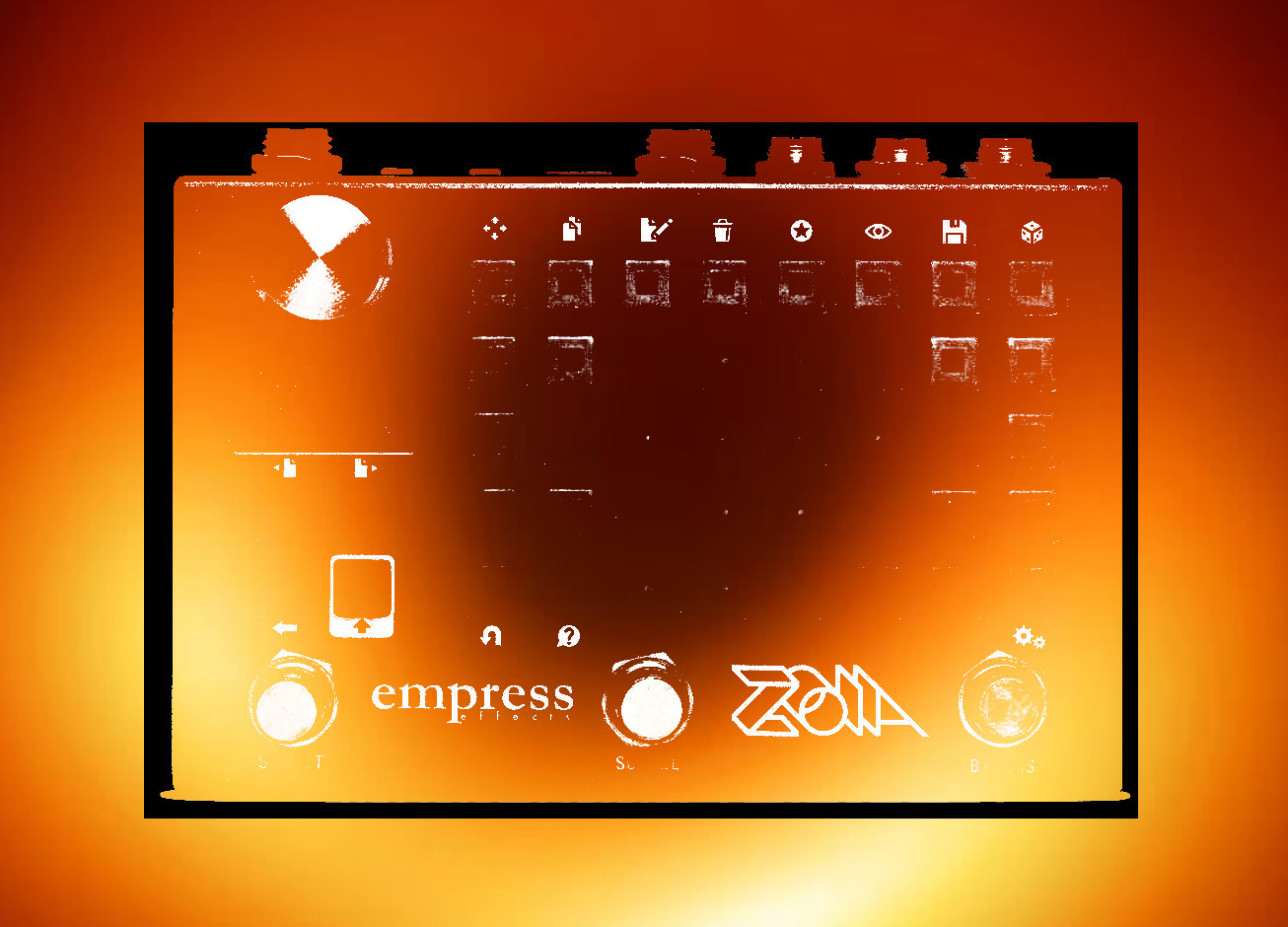This is a fork of the original Dissolve patch: https://patchstorage.com/dissolve-a-dream-machine-synth-and-delay/
From those patch notes (with edits):
“Dissolve is a couple of things: a four-voice polyphonic keyboard synth built around [lowpass-filtered PWM’ed square waves], and a Cosmos-style delay/looper that can be used on the built-in synth or an external audio source (or both). But it is the combination of the [modulated, filter-softened] internal synth and this blurry delay/looper that makes me describe it as a ‘dream machine’: as the [smooth] sounds of the synth swirl around in the offset, cross-feeding delays, wonderful little dreamscapes form and dissolve (hence the name).”
While that patch used pinged filters, this one employs a PWM square wave synth, for a different sort of vibe. I had wanted to do a fork for a while, but the first voice I tried out — a triangle-based synth — just… didn’t inspire. It was fine. But for months I kept coming back to it, playing around, and going, okay. But just okay.
I’m sometimes slow. Eventually I figured: hey, what if I tried a different voice, you know, one I might like more in this context? And here we are. Throwing in a square wave PWM voice really changed the whole vibe. The synths felt more synthy. The loops felt more loopy. You get it. It’s the little things.
Aside from the change in synth voicing, a couple of key differences:
– The original had an option to control the synth via external MIDI. There wasn’t the CPU to add this option here. But I really like this synth voice and may spin it off into its own independent polysynth patch.
– The original patch uses a more aggressive panning approach. That worked well with very discrete, percussive sounds, I think, but here, I opted for something a bit more focused. They voices are panned throughout the stereo field, but not as aggressively.
– This version has a “Suppress regen” control (on the second page) which allows you to duck the regeneration when the synthesizer plays (it employs an inversion of the synth envelopes, rather than an envelope follower — again, CPU — so it doesn’t work on external audio processed through the patch).
External audio input is in stereo, and the patch output is in stereo.
Even though the demo is on a Zebu, this patch uses no peripherals (no stompswitches, no CV inputs or outputs), so it should function identically on either platform.
Controls:
The delay controls are identical to the original patch, so I’m just going to refer you to the original Dissolve patch notes for those.
The synth controls:
Amp attack and amp decay — these control the triggered envelope employed by the synth. Each one is linearly scaled and goes up to 10 seconds, so a value of .1 = 1 second, a value of .0400 = 400 milliseconds, etc..
PWM amount — this controls the range of the pulse width modulation. The PWM is centered on a 50% pulse width, and the modulation is bipolar, so it swings from narrower to wider pulsewidths, centered around an even pulse width.
On the second page, you will find the PWM LFO, which allows you to set the rate of the PWM as well as the waveform. (By default it is a triangle wave, but you can explore other options by adjusting the waveform option in the module menu.)
Filter frequency — this is a bipolar control, which allows you to set the lowpass filter’s cutoff frequency. The voices are filter-tracked at 50%, which I found allowed the filter to track the pitch without becoming too “screechy” at higher pitches. This frequency amount is added to that baseline tracking.
Resonance — the resonance for the lowpass filters, it doesn’t go too extreme (although it definitely can get aggressive)
Filter envelope amount — this directs the amp envelope to the filter. It is also a bipolar control. (You can get some interesting sort of reverse swells by setting the filter frequency high and using a negative envelope amount.)
There is also a transposition control, which transposes the entire keyboard. (The notes represented on the keyboard will change as the control is adjusted.) By default, the keyboard is set to a pentatonic-ish scale, but you can change the scale by selecting the notes of the keyboard and adjusting their value. I do recommend that the first note be an A, even if you don’t plan to use an A scale, because it makes the transposition control easier to make use of.


